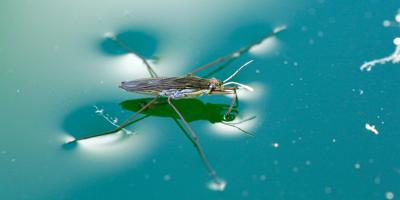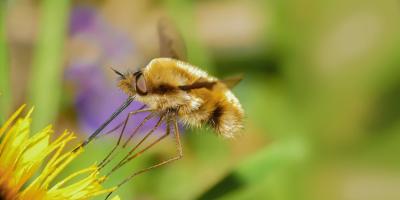Meet the Asian Giant Hornet: aka ‘Murder Hornet’

With headlines straight out of a comic book, ‘murder hornets’ have invaded the western United States, but are they really as felonious as they sound? You be the judge: Growing as big as two inches long, murder hornets’ massive jaws are designed to decapitate their natural prey -- honeybees. But it’s their stingers that earn them their bad reputation. Victims have likened their sting to “hot metal driving into their skin,” and the venom they inject isn’t just painful -- it can be deadly.
So, how worried should you be about murder hornets this summer?
The Facts
In east Asia, where murder hornets are native, about 30 to 50 people die each year in Japan as a result of their sting. But it isn’t that their venom is particularly strong; in fact, their meal of choice -- honeybees -- have more potent venom. But honeybees can only sting once, whereas murder hornets can stab repeatedly, sometimes even to death.
But even though murder hornets definitely pose more of a threat to human health and safety than most stinging insects in the United States, the true threat they represent to our way of life has more to do with how they affect honeybee populations. Honeybee numbers, as well as those of other pollinators, are declining across the board, which is bad news for agriculture. Honeybees are responsible for pollinating as much as one-third of all the crops that become human food.
Bad News for Bees
Honeybees may lose the fight against the Asian giant hornets when battling one-to-one, but honeybees have a secret weapon that murder hornets simply can’t compete against: Strength in numbers. In regions where murder hornets thrive, the local honeybee populations have developed a unique defense strategy of surround-and-conquer. When a murder hornet enters a honeybee nest, hundreds of bees surround the invader, forming a ball. This raises the air temperature around the hornet to over 115 degrees, which the honeybees have no trouble surviving. But to the murder hornet, it’s a deadly inferno.
Without this sophisticated defense system, honeybee hives are helpless against swarms of murder hornets, which have been observed wiping out honeybees at the rate of one decapitation every 14 seconds decimating an entire hive in a matter of hours. All that carnage isn’t just for sport, however. Murder hornets feed themselves and their young on the bee carcasses left over from their siege.
Knowledge is Power
Experts are keeping an eye on the situation and most say American fears over murder hornets are generally overblown. When a murder hornet hive was found on Vancouver Island, authorities destroyed the nest to prevent the species from multiplying. Meanwhile, scientists have analyzed the DNA from murder hornet specimens and so far have not been able to detect a pattern that would indicate the species is spreading.
Which is good, because the few sightings reported in North America so far are all the way west, about as far from New England as you can get on land. Even still, we tip our hats to the pest control heros that are working tirelessly to squash this pest before it causes bigger waves by threatening our best pollinators.
While these hornets are a safe distance away, remember that New England is still home to several other stinging pests, and we are at your service. Give us a call to discuss how we can help defend your home and family against local wasp species.



